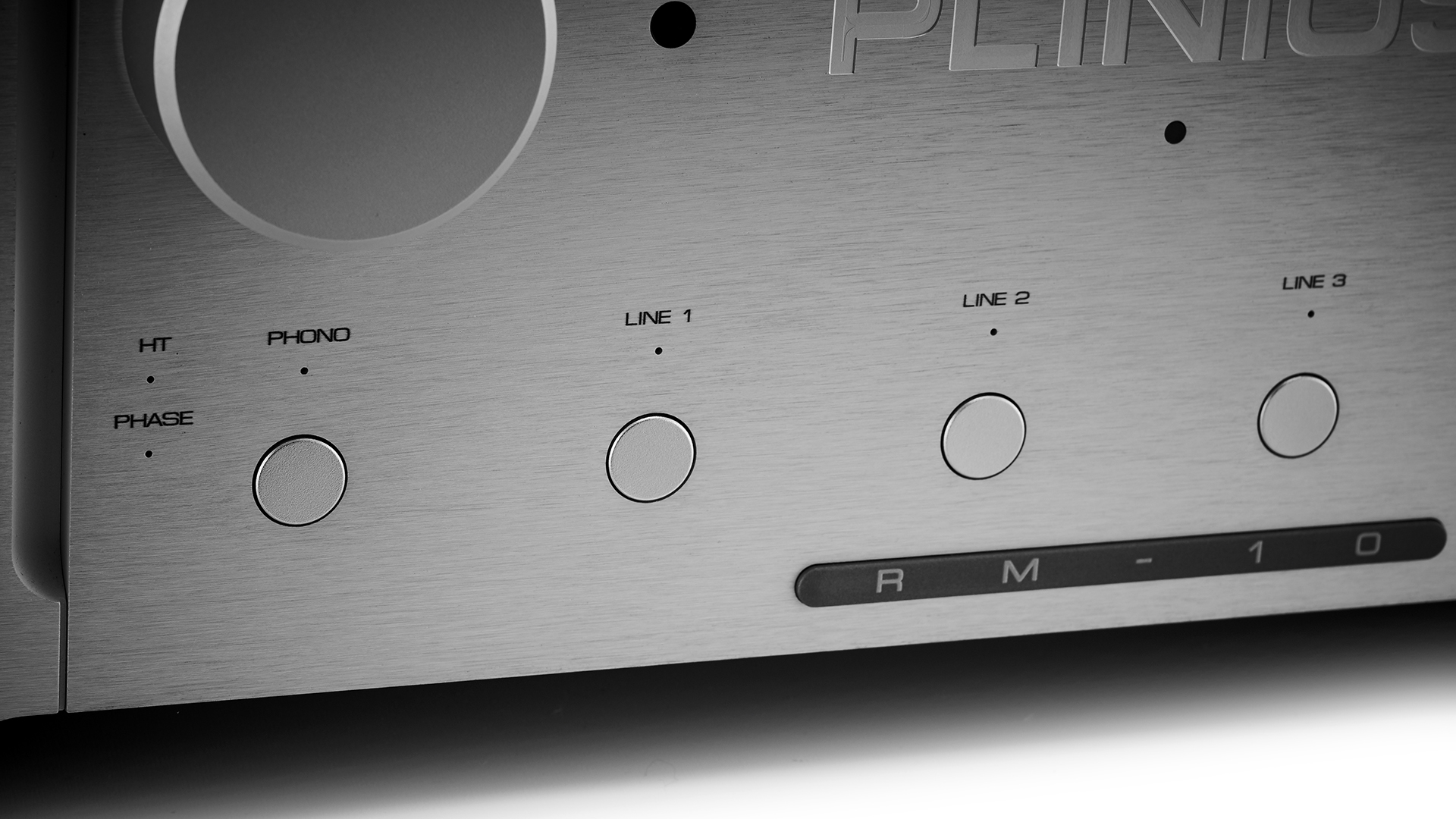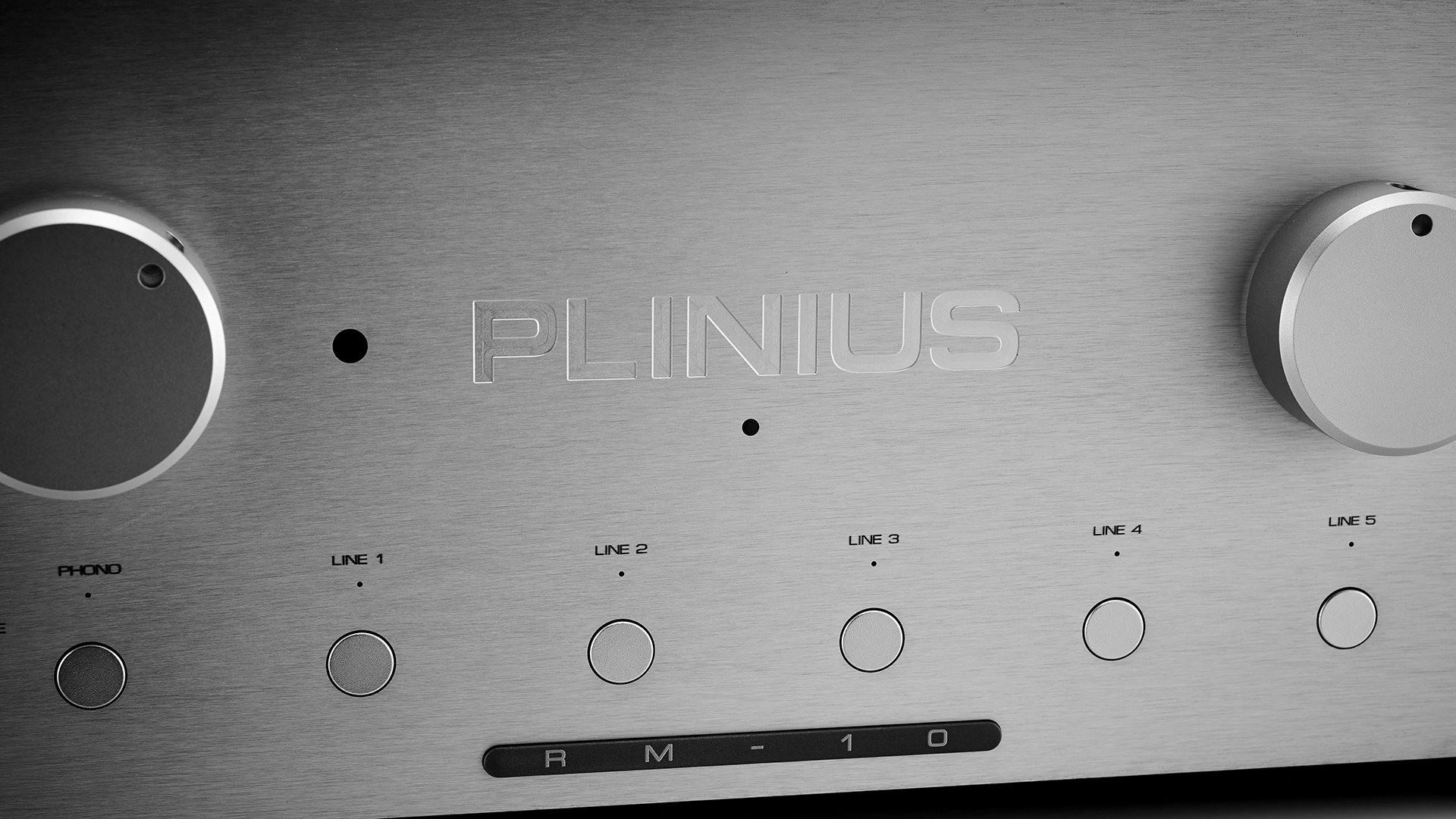What Hi-Fi? Verdict
This Plinius pairing combines entertainment and analysis brilliantly. In the right system they sound magnificent
Pros
- +
Huge sonic scale and authority
- +
Excellent attack and rhythmic drive
- +
Fine build and finish
Cons
- -
Price is beyond most
- -
Demanding of partnering equipment
Why you can trust What Hi-Fi?
If the idea of spending £34,000 on a stereo amplifier makes you baulk, we fully understand – it’s a huge sum of money that could easily be a new car or a deposit on a house. But, if it’s an amplifier and not four walls you’re after, we haven’t heard many better than Plinius’s Reference M-10 / A-300 combination.
As the ‘Reference’ in the name suggests, this is the company’s range-topper, the best it knows how to make, and make no mistake, it’s very good indeed.
Features

There’s little in terms of frills here. The Reference M-10 is a traditional purist preamp. It’s a dual-mono unit with a fully discrete electronic design that eschews the use of integrated circuits in the signal path. Plinius doesn’t think they sound as good as discrete components.
The preamp’s dual mono configuration helps to keep the signal paths of the left and right channels the same, so helping stereo imaging and overall consistency. The central theme behind every aspect of the M-10’s electronic design is to deliver the most transparent and faithful sound possible. Great care has been taken to keep noise levels to a minimum and distortion low.
There’s no shortage of analogue connections, with six line level inputs – three of which can be switched from single-ended RCA to balanced XLRs. The Plinius even has a dedicated home cinema input that bypasses the volume control and makes integrating the M-10 into a multi-channel set-up easier.
As for outputs, there are three stereo pairs in total, with the option to switch two of them to balanced XLR. A maximum output level of 7V for the single-ended option and double that for balanced means that the M-10 can drive just about any power amp and long interconnects without issue.

Plinius Reference M-10 preamp
Inputs 3x stereo RCA, 3 x RCA/Balanced XLR, HT (RCA)
Outputs RCA, 2 x RCA/Balanced XLR
Gain levels 0dB and 12dB
Dimensions (hwd) 17 x 51 x 48cm
Plinius Reference A-300 power amp
Type Stereo/mono
Power output 300W
Inputs RCA and balanced XLR
Dimensions (hwd) 29 x 51 x 55cm
There’s a gain switch on the back panel to make the pre less fussy about system matching. Once the optimal gain value is chosen for the partnering power amp – there’s a choice of 0dB and +12dB – the M-10’s volume control will still allow plenty of adjustability. We choose to leave it on 0dB for use with the RA-300.
You won’t find any digital inputs here, and we can’t say we’re disappointed. Such inputs can be useful, but in this part of the market we’ve yet to come across a product that mixes analogue and digital circuitry without some sort of obvious sonic compromise.
If you need digital inputs, you’ll be better served by buying a dedicated DAC, such as the excellent Chord Hugo TT2 (£3,995), rather than going for a high-end alternative to the M-10 that does both.
The Reference A-300 is a simpler beast (outwardly at least) than the pre, as power amplifiers tend to be. Beast is an appropriate term for this powerhouse. It outputs 300W per channel into 8ohms when used as a stereo unit and increases that to 1 kilowatt when configured as a monobloc.
Changing between stereo and mono mode is done through a rotary switch on the back panel that also governs the choice between single-ended and balanced XLR inputs. Elsewhere on the back you’ll find four pairs of high quality speaker terminals to make biwiring easier.
On the front panel, alongside the standby button, you’ll find the control to change the A-300’s circuitry from working in Class A/B operation to pure Class A.
Doing this won’t do wonders for your electricity bill. The power consumption at idle goes up from 184W to 1.1kW, but it does change the A-300’s sonic character notably, and mostly for the better.
Build

Just as the price demands, the build of both these products is excellent. These units feel like they’ll last for decades, and to our eyes at least, strike a nice visual balance between showy and stylish.
You’ll need plenty of space. Even the M-10 is massive, being unusually tall and deep for a preamp, so make sure your rack can accommodate it. It’ll come as no surprise to find that the A-300 is also huge – that extensive heatsinking, so vital to keep temperatures on the right side of manageable, accounts for much of that visual bulk.
Choose to run the power amp in Class A mode and even those sizeable heatsinks warm up to a degree where they’re hard to touch for long. Still, there’s an upside in that you’ll be able to turn your central heating down through winter.
Both these Plinius units are heavy though, with the preamp weighing in at a chunky 16kg and the power at 57kg. Don’t try to lift the A-300 by yourself.
Sound

Our review samples need a couple of days of use before their sonic character stabilises. Any amplifier of this level needs suitably talented partners to shine, and this pre/power is no different. We use our usual sources – Naim’s ND 555/555PS music streamer and the SL1000-R turntable from Technics – and ATC’s SCM 50 speakers. The M-10 is a line level preamp so we use Cyrus’s Phono Signature/PSX-R2 combination as the phono stage.
We listen to Stravinsky’s The Rite Of Spring and it’s no surprise to find that this amplifier pairing delivers a sound packed with impressive scale and authority. How could an amplifier with such a huge power output do anything else?
All that grunt isn’t just about going loud though, our ATC speakers manage to deliver high volume levels with even more composure than when driven by our usual reference amplifier, Gamut’s D3i/D200i pre/power. That muscle is felt in the ease with which this pairing renders the music’s savage dynamic swings, and the almost physical assault we feel during the crescendos.
This Plinius combination hits hard, and with an astonishing level of agility. It sounds fast and frantic when the music demands and yet during the quieter sections, it’s more than able to drop a gear, changing the mood and scale of the music appropriately.

We’re impressed with the way this duo delivers low frequencies. These are wonderfully deep yet remain firmly grounded and taut. There’s no shortage of agility here, with low-end sounds traced with accuracy and presented with a level of texture and grip that is stunning.
Stereo imaging is impressive. It’s expansive, tightly focused and wonderfully stable, no matter how demanding the music gets or high the volume level is. We’ve heard amplifiers that give more in the way of image depth, but little that can plant instruments and sounds with such confidence and determination.
Tonally, this Plinius pairing is on the lean side of neutral, if you configure the power amp in Class A/B mode. Even so, there’s no shortage of body or sonic substance when the A-300 is working this way. Switching to Class A makes the presentation a little fuller and sweeter, adding a touch of warmth without sacrificing too much in the way of responsiveness. The midrange in particular sounds lovely, full-bodied and expressive.
But it’s not all one-way traffic. We notice that the low-end becomes a touch softer (though still excellent by most standards) and we can’t track complex bass notes with such ease. Overall, the sound is a little crisper and more agile in Class A/B though less inviting than Class A. Our preference changes between recordings, which suggests the choice between the two modes will come down to taste, the recording and the partnering system.
We try Nirvana’s Nevermind and these Pliniuses sound right at home. Kurt Cobain’s vocals on Smells Like Teen Spirit come through with all the passion and aggression intact. This pairing does a fabulous job revealing the nuances and grit in his voice, while delivering the full energy of his performance.
This two box has a wonderful sense of drive complimented by plenty of attack. It’s rhythmic and can communicate the changing momentum of a recording brilliantly. Rarely have we heard an amplifier, particularly such a muscular one, track the timing of a piece of music so well. Most high-end alternatives trade such things for outright refinement, stability or tonal neutrality. That isn’t the case here.
Verdict
This Plinius combination is good enough in all those areas, but preserves all the excitement and energy present in the recording. It’s without doubt one of the most entertaining amplifiers we’ve heard. Couple that with the superb detail resolution, ability to track multiple instrument strands with ease and sky-high level of transparency and you have a world class performer.
No one needs to spend this kind of money on a piece of hi-fi, but if we had the money, and a system capable enough to make the most of these Pliniuses, we could be tempted to.
SCORES
- Sound 5
- Features 4
- Build 5
MORE:
Read our Chord Hugo TT2 review
What Hi-Fi?, founded in 1976, is the world's leading independent guide to buying and owning hi-fi and home entertainment products. Our comprehensive tests help you buy the very best for your money, with our advice sections giving you step-by-step information on how to get even more from your music and movies. Everything is tested by our dedicated team of in-house reviewers in our custom-built test rooms in London, Reading and Bath. Our coveted five-star rating and Awards are recognised all over the world as the ultimate seal of approval, so you can buy with absolute confidence.

